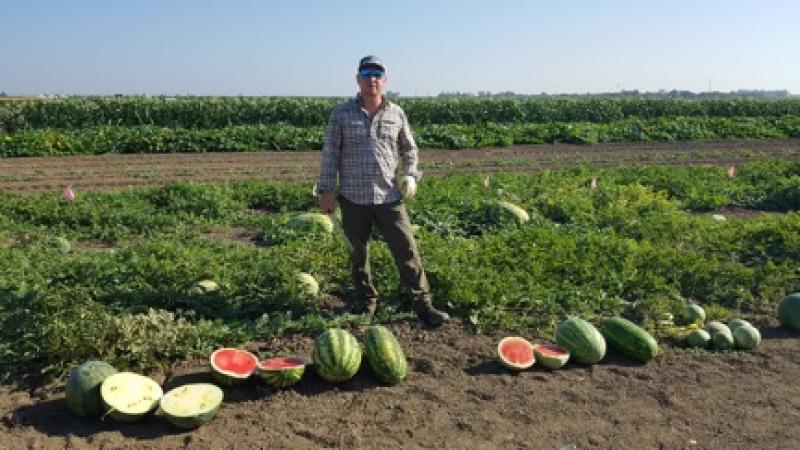Juicy, seedless watermelon is a summer staple and a great example of plant breeding innovation.


Above. Syngenta's watermelon breeder at their Woodland, CA location explains how seedless watermelon are produced. The small melons on the right side of the photo are diploid pollinators.
I recently attended the National Association of Plant Breeders' annual meeting in Davis, California. As part of the conference, attendees toured Syngenta's Woodland Facility and learned more about melon, squash, and tomato breeding. My favorite part of the tour, was learning firsthand how seedless watermelon are produced and how breeders have improved both the practice and final product.
Watermelon is a diploid crop, meaning it has two sets of chromosomes. Through a chemical process, the number of chromosomes is doubled to create a tetraploid plant. When a diploid plant pollinizes a tetraploid plant, it will create a triploid plant with three sets of chromosomes that us unable to produce seeds.
This means that farmers producing seedless watermelon must plant both diploid and tetraploid plants in the same field. The diploid plants serve as a pollen source and in many cases, as a source for disease resistance genes too. However, the diploid plants will also set fruit which is often not intended for harvest. These unmarketable melons compete for space with the more valuable seedless watermelon fruit and can even pose a risk to pickers. To address the first issue, breeders have developed pollinizer cultivars that produce small melons and require less space, reducing competition and allowing growers to produce more seedless watermelon with the same amount of land. Pickers can easily roll an ankle by tripping over the small fruit from pollinizer cultivars while harvesting the seedless watermelon. That is why breeders have introduced the explosive rind gene into pollinizer cultivars. The explosive rind gene causes the fruit rind to burst when stepped on, keeping workers safe.
So, as you enjoy the end of summer with a slice of watermelon, make sure to appreciate how plant breeding has improved the product you are enjoying.
Written by TPS Fellow, Stephanie Karhoff
